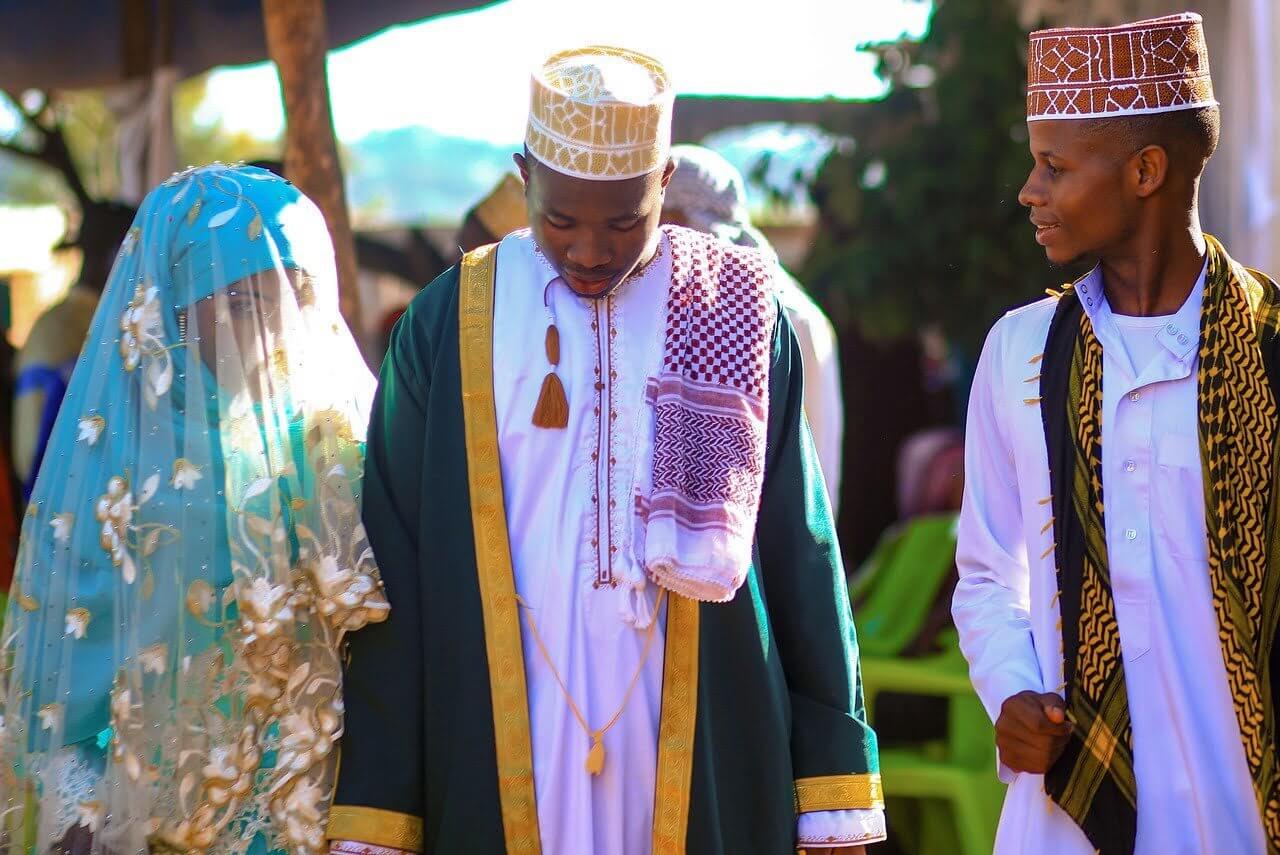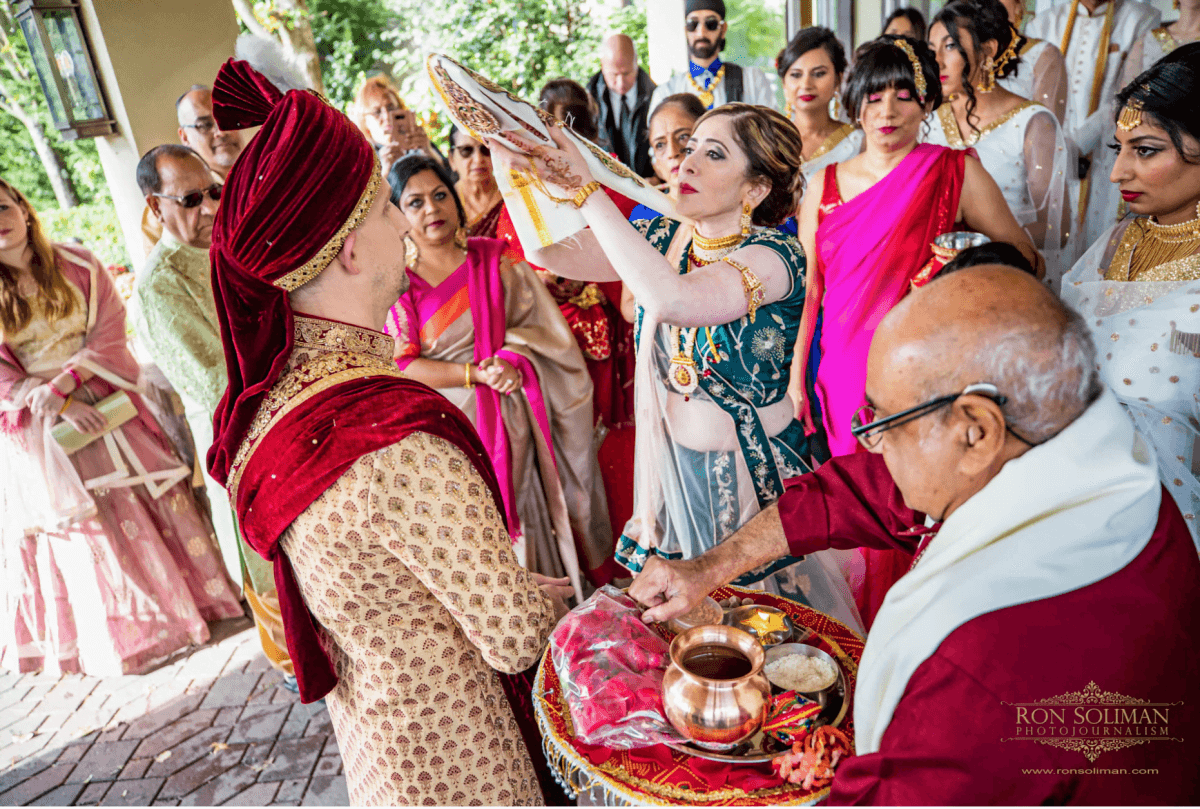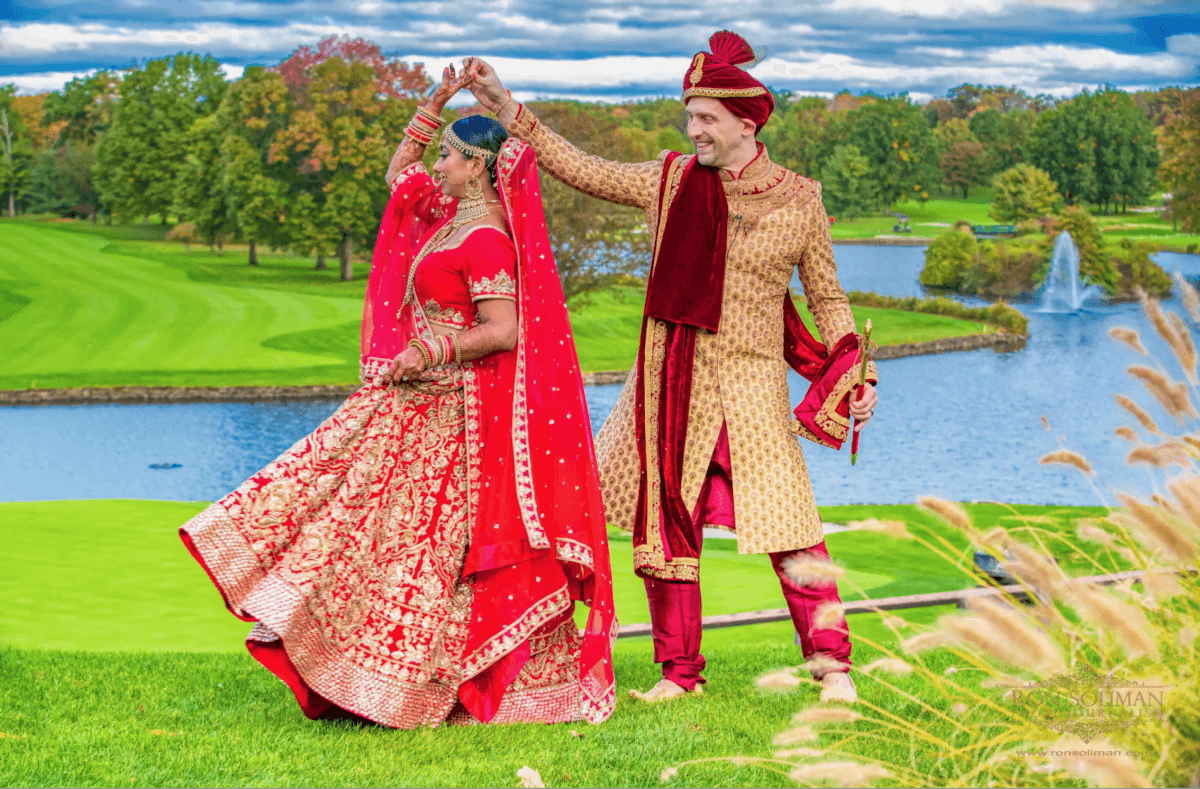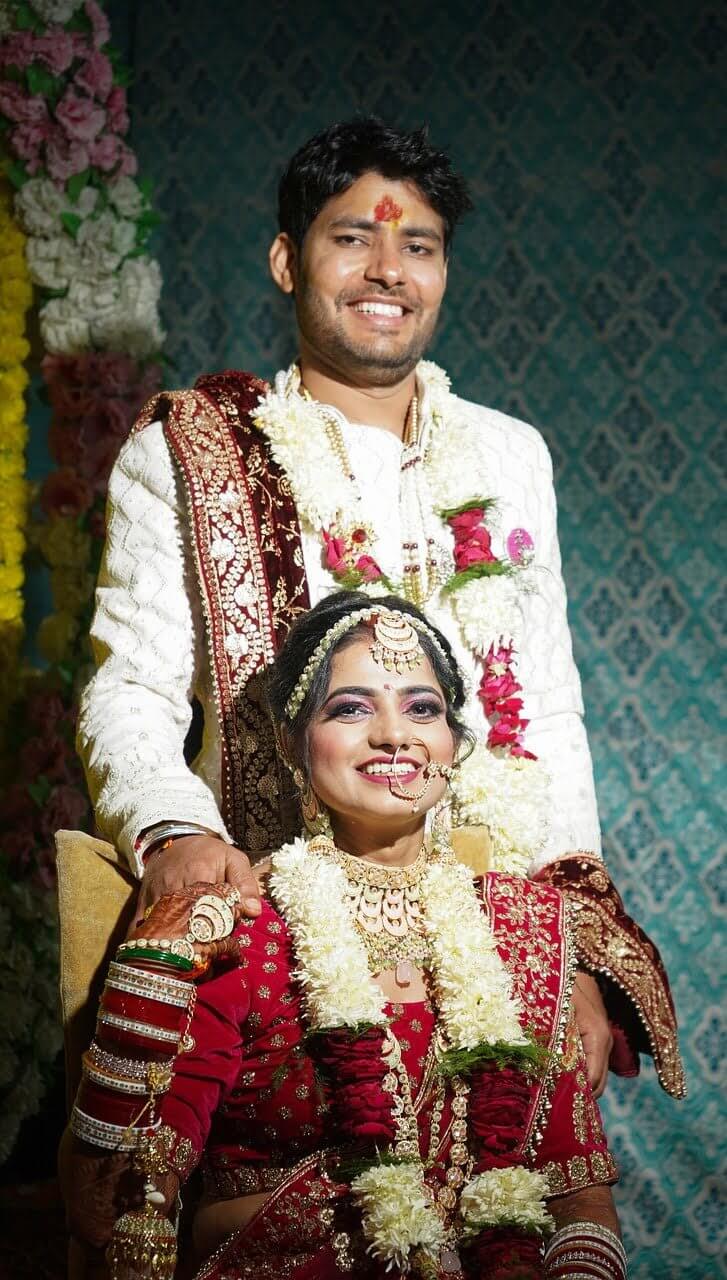An Indian wedding at Brooklake reflects the ethnic diversity of the regions of Southern India

Photo credit: Ron Soliman
Festive, colorful, and rich in diversity.
An Indian wedding is a marriage between two people and two families. An Indian wedding in New Jersey reflects the ethnic diversity of the regions of Southern India: Andhra Pradesh, Telangana, Karnataka, Tamilanadu, Pudducheri and Kerala. The different geographical regions have traditions of their own, thus no celebration is the same as each couple brings their own uniqueness, and background to their event.
The Brooklake Country Club can accommodate these events as an Indian wedding venue in NJ.
With some similarities and many differences due to regions in India, there are at least 15 different variations of wedding ceremonies, and many variations of religion. These variations of weddings include:
- Assamese
- Jain
- Marwari
- Bengali
- Kannada
- Muslim
- Buddhist
- Kashmiri
- Pahari
- Christian
- Malyali
- Punjabi
- Gujrati
- Maharashtrian
- Sikh
The Indian wedding celebration is composed of different festive events that lead up to the wedding ceremony. Depending on the variation, different traditions are observed.
The three major religions practiced are: Vivah, Anand Karaj, and Muslim.
Vivah, originates from Hinduism. Hinduism is also known as Brahmanism, a polytheistic religion. Based on ancient scriptures, a wedding ceremony is known as a Vedic ceremony. The rituals may vary based on the region of India.
The Anand Karaj is the belief in a monotheistic religion, Sikhism. Sikhism is a collaboration of 10 succeeding Gurus, beginning with Guru Nanak Dev, and ending with Guru Gobind Singh over 270 years. It is a marriage of the individual soul with the Universal Soul, versus a belief of a union between the bride and groom. There are four progressive stages to reach union with God.
Muslims are followers of the world’s largest faith, Islam. It is based on the holy book (Qur’an). Muslims believe it is a religious duty to marry.

Engagement
The Hindu engagement period encompasses numerous engagement ceremonies. Separately, depending on the family’s religion, region, or their preferences, the bride and groom’s family will have rituals of prayers, blessings, and the giving of gifts. The engagement begins with both families exchanging gifts of money, clothing, and sweets. An astrologer or priest is consulted to review horoscopes and assist in determining the wedding date and time.
The Sikh engagement period will undergo many engagement ceremonies after the parents are told of the couple’s intent. Both sides exchange gifts, conduct prayers, and discuss the wedding arrangements.
- The thaka ceremony. A close group of family members witness the exchange of ceremony rings. The woman’s family presents gifts to the man. These exchanges are a commitment on both sides. The dates for the ceremony are then set.
- The Rokai ceremony occurs at the home of the groom. In India, the bride’s family may bring sweets, jewelry, and money, initially to the groom’s family. (The bride does not attend.)
- The engagement ceremony (kurmai) is announced, and the groom’s family returns the visit to the bride’s family. Gifts of jewelry, money and clothing are exchanged. They do not believe in consulting an astrologer. A long scarf is given to the couple that serves as a holder to contain the items that were given to bless the couple.
One of the pre-wedding rituals, for both Hindu and Sikhs, is usually held within two weeks of the wedding (and often the night before the wedding), a bonding event of both families is held. This event, the sangeet, is a night of folk songs and dance. The activities of the women may separate from the men with the bride, and the men separate from the women with the groom. Brooklake Country Club may be used as an Indian Banquet Halls in NJ for this event.

Photo credit: Ron Soliman
The Hindu Wedding
A life cycle, Samskara, includes a Vivah (wedding.) A Hindu wedding is one of 16 transitional rituals that one experiences from conception to death to move closer to God. The Vivah is the women’s move from child to adulthood. By honoring the gods and purifying one’s soul, this ritual is deemed necessary to reach spiritual enlightenment.
The wedding may take place in any area that is covered. The ceremony is usually held after sunset or before sunrise. The Brooklake Country Club accommodates these options and may be used as an Indian banquet hall in NJ. The length of the ceremony will depend on the priest and their background. A ceremony may be condensed to two hours in both English and Sanskrit, or a full five hours, only in Sanskrit.
There are seven major ceremonies that comprise a Hindu wedding:
- The fathers or guardians of the bride and groom enter a verbal contract about the marriage – Vagdana
- The father or guardian gives their daughter to the groom for the upliftment of Darma – Kanya Sampradana
- The welcoming of the bride and groom – Varana
- The ritualistic holding of the couples hands – Panigrahana
- A seven-step walking ritual by the couple – Saptapadi
- A walking ritual around the holy fire four times with a parched paddy (puffed rice) and purified butter from the hands of the bride and groom as an oblation (sacrificial honor to Vedic gods) – Laj homa
- The placing of a red vermilion on the forehead and the furrow of the parted hair of the bride by the groom – Sindur dam
On the night before the wedding the women gather for the Mehndi (henna) ceremony. The brides hands and legs are artistically painted with henna. This application represents growth, harmony, and freshness. Other ladies may also have their hands done. The groom’s name is applied in the design, and the groom will find this later. The groom may also have his hands painted.

The Hindu Wedding Day
The wedding day may begin with the bride and groom preparing with the help of family to apply a yellow paste of turmeric (pithi) and Chandan (paste of sandalwood.) The yellow color is thought to indicate purity and glowing health.
Typically, the Hindu wedding rituals include:
- The groom’s procession to the wedding venue (the Baarat or vara yatra) featuring his riding of a horse accompanied by a live band. Family and friends dance along with his procession.
- The bride’s family welcomes the groom at the venue (Pokwanu). The bride’s mother will apply a tilak (a mark) on his forehead and welcome him, and his family into the venue. The priest will hold a brief ceremony and the groom is brought under the mandap (a temporary structure with a canopy cover and pillars.) The four pillars represent the parents.)
- For good luck the priest will invoke the elephant God, Lord Ganesh, to remove all obstacles. Under the Mandap, the bride’s family and the groom’s family will sit on the stage (Ganesh Puja.)
- The bride’s parents will wash the feet of the groom (Vaarpooja). Once completed he will be shielded from seeing the arrival of the bride by a cloth veil (antarpat).
- (Kanya Aanga) escorted by a maternal uncle or brother, the bride arrives and is escorted to the Mandap. Once the cloth veil is removed from the groom’s view, they exchange floral garlands. She presents hers first, indicating her free will to marry.
- Granthibandan and Varmala. The groom’s scarf is tied to the bride’s shawl with a knot and prayers are offered. The knot symbolizes two souls joining together.
- The bride’s parents give away their daughter to the groom (Kanyadan.) They join their hands and pour water over to symbolize their being one as husband and wife.
- The bride’s parents take a cloth and tie around their hands while the priest recites blessing prayers. Their joined hands symbolize an unbreakable tie and union as man and wife.
- In a square shaped tray (kunda) a sacrificial fire tradition burns (Havan). This tray combines the vertical element of fire with the horizontal elements of fire and earth. The bride and groom circle the fire (Mangalfera) four times, or up to seven, hands joined to signify they are entering the world together.
- Seven vows are taken by the couple which seal the marriage forever (Saptapadi) around the fire. The couple is now legally married.
- The cosmetic powder, Sindooram, is placed at the part of their hairline (Sindur), and the Mangal Sutra (a gold chain placed around the bride’s neck)
- At the end of the ceremony the priest guides the couple to look at the pole star. It is symbolic for guidance. The pole star guided people at night with its fixed position in the sky.
- Following the ceremony, the Akhand Saubhagyavati is the opportunity for married women to offer congratulations to the couple and whisper blessings into the bride’s ear.
- Blessings are then received from priests, family, and friends (Aashirwad.)
- Lastly, the Vidaii – the bride’s family bids her farewell. She is given rice and coins that she throws over her shoulder as she leaves.

Photo credit: Ron Soliman
Anand Karaj
The Sikh wedding has beauty in its parts. The first event is the thaka ceremony. A close group of family members witnesses the exchange of ceremony rings. The girls family presents gifts to the boy. These exchanges are a commitment on both sides. The dates for the ceremony are set.
The ceremony is held either at the place of assembly or worship, (Gurdwara) in mid-morning or early afternoon. It includes shabads, (religious musical compositions sung from the scripture.) After the arrival of the groom, by Baarat, there are introductions of the family elders to others over masala tea.
Once inside the Gurdwara, the bride and groom sit together on the floor in front of Guru Granth Sahib. The marriage prayer (laavan) is recited and sung by the Ragi. The couple will walk around Guru Granth Sahib four times signifying the importance of a Guru-centered life.
A member of the Sikh community will speak before the couple about what marriage means from a Sikh perspective.
At the close of the Sikh ceremony a sweet wheat pudding is served.
Muslim
The Muslim wedding is simplistic and entails the bride and groom to sign a contract to each other, and to Allah. This contract also includes terms of divorce, called the tallay. The contract may be signed weeks before the ceremony day, or on the day of the wedding. The groom or his father may sign the contract in the presence of an Imam, (Islamic prayer leader) plus two witnesses from each family. Not all Muslim cultures have a wedding ceremony since the couple is considered married on the signing of the contract.
If a ceremony (Nikah) is held, a relative or friend of the groom states the groom’s intent. If the bride’s family approves of the groom a representative, (wali – often the bride’s father), will acknowledge the request on the bride’s behalf. A prayer is offered, and the bride’s father formally accepts the groom as his daughter’s future husband. The ceremony may be in a mixture of Arabic and English, depending on the language used by the couple. Sweets may be passed out after the ceremony to celebrate the union. When held in a Mosque the men and woman may be seated separately.
Post-wedding celebrations
Festivities after an Indian wedding are always held. The Brooklake Country Club is considered an Indian Banquet Hall in New Jersey with the capability to accommodate these events.
On the third day following a Hindu wedding, a lavish reception is usually held in the evening. A cocktail reception, followed by a dinner, with speeches, and lots of dancing fill the evening. Professional dancers entertain and spice up the reception. When the couple dances, money may be tossed upon them to wish them prosperity.
Traditionally, immediately following a Sikh wedding there is a vegetarian luncheon (langar). Modern couples may now have a formal dinner reception in the evening, and alcohol may be served.
A Muslim wedding may have three ritual post-wedding celebrations.
- Immediately following a wedding ceremony, the bride meets with her family for well wishes. Her father hands her to her new husband and asks him to take care of her. This emotional departure (Doli) is the beginning of their new life as husband and wife.
- The Muslim walimah, a grand festive reception, is paid by the groom. Abundant foods such as meat, rice, fruit and sweets may be served. No alcohol is served. The couple are treated as royalty. They are showered with more gifts, and blessings.
- Four days after the wedding, the bride and groom visit the bride’s family. They receive well wishes and join in a hearty meal with the family.
Steeped in tradition and religion, an Indian wedding is very festive, with memorable layers of religious and fun-filled events to wish the newlyweds the best of life to come. The Brooklake location serves well as an Indian wedding venue in NJ!






